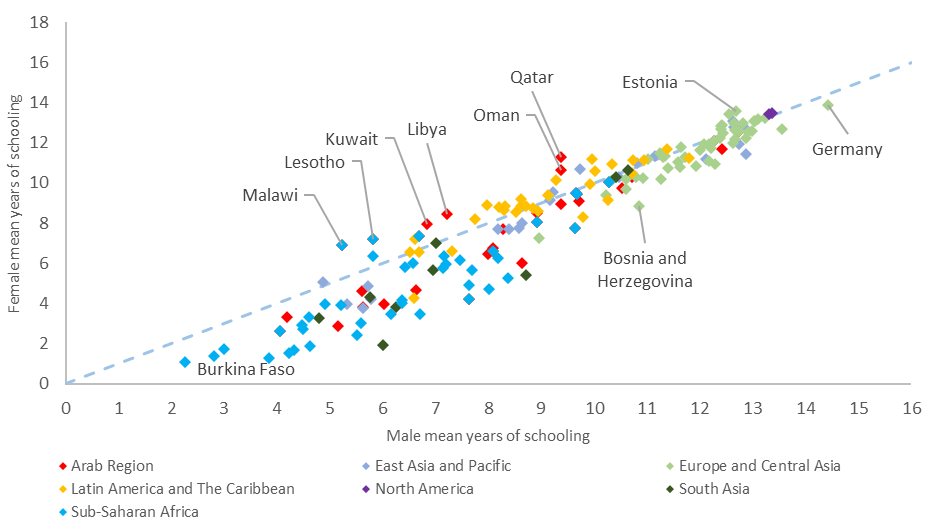جدول المحتويات:
Gender equality
Gender disparities in education, employment and incomes are major obstacles to human development. Despite significant improvements in the past decades, women and girls still face many inequalities in basic indicators of human development. Factoring in the quality of development shows even sharper inequalities.
Figure 21. Male and female mean years of schooling

Source: UNDP, 2020.
Education is among the most important aspects of gender inequality. While the gender gap has improved globally in the last few years, it is still prominent, especially for poorer and more challenged countries. Most countries still achieve fewer years of schooling for women than for men (figure 21). This gender gap is widest for countries with an average of less than 10 years of schooling, with a few exceptions such as Kuwait, Lesotho and Libya.
Figure 22. Male and female GNI per capita (Log scale)
Source: UNDP, 2020.
Globally, on average, women’s GNI per capita is $10,000 less than that of men ($24,458 for men compared with $14,441 for women).[1] In average monthly wages, a woman in informal employment earns only 47 per cent of what a man in formal employment earns.[2] Women in the formal sector earn only 79 per cent of what men in formal employment earn.[3] This income gender gap is highest for Arab and South Asian countries (figure 22).